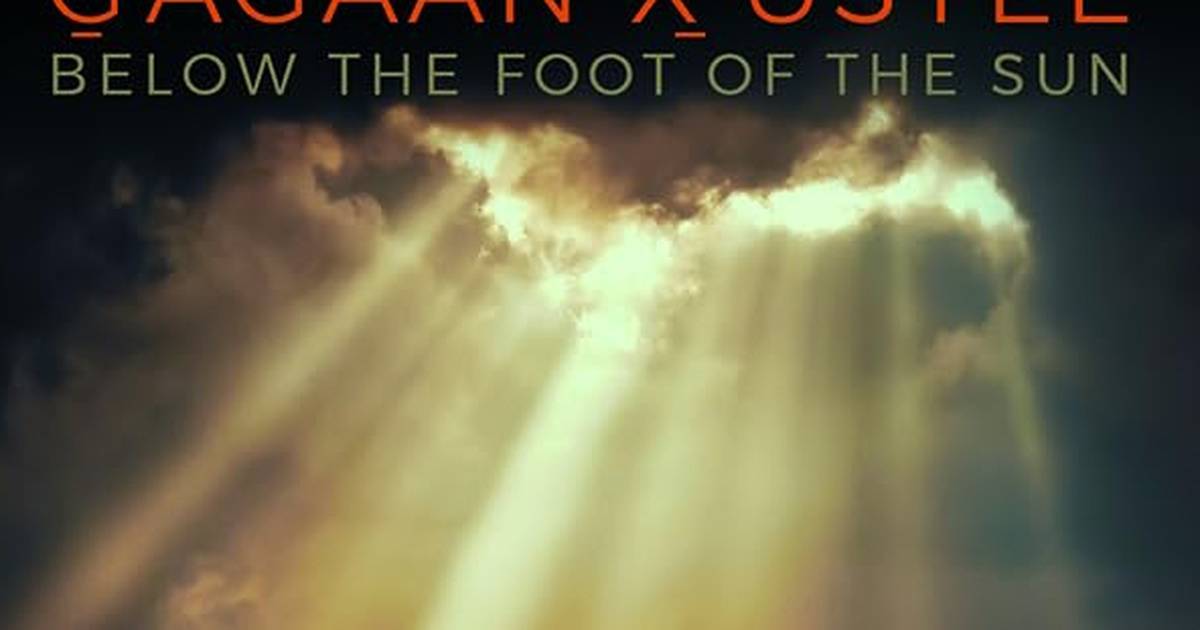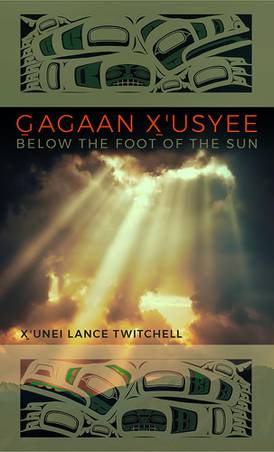
“Gagaan X’usyee: Below the Foot of the Sun”

By X’unei Lance Twitchell; University of Alaska Press, 2024; 92 pages; $16.95 paperback, $13.95 Ebook.
X’unei Lance Twitchell’s long-awaited first poetry book presents creative work drawn from his years of contemplating his life as an Indigenous man, his knowledge of the Lingit language and his advocacy for Native language revitalization, and his deep-felt considerations of cultural losses and resilience. In four sections based on how the Lingit people speak of gagaan — the sun — these poems spread their light into beauty and realized truths. Some poems make use of Lingit oratory style, although most are imagistic and contemporary in style. Ravens appear as tricksters, as do coyotes in a series of poems written while Twitchell spent time in Navajo country. Earthquakes, or what they suggest about tremors and unsettlings of different kinds, recur throughout.
Unusual among poetry collections, “Gagaan X’usyee” includes poems in both Lingit (formerly Tlingit) and English, not in translation on facing pages but as themselves. This presentation encourages — perhaps even forces — readers to confront the Lingit language directly, to appreciate it as it appears visually on the page, to sound it out and perhaps to recognize words or at least language repetitions and rhythms. Lingit here is respected on a par with English and given its own dignity for understanding and speaking about our world. Twitchell thus encourages translanguaging, the ability to move comfortably between languages. (Translations of the poems that are wholly in Lingit appear at the book’s end, along with a partial glossary.)
Twitchell, who teaches Alaska Native languages at the University of Alaska Southeast, studied the Lingit language and oratory with scholars Nora and Richard Dauenhauer until their deaths, and several poems reference them and their work. “Du Goojí Ynaade” speaks directly of their love, “a halibut hole and a half chasing one another / in poems, grammar, immersions, and outdoor adventures” and of recording sessions when Nora encouraged Twitchell to take a turn translating the words of “her mother’s mother’s father,” a man born in the 1860s and recorded in the 1950s. Approaching a “mountain of work,” “I close my eyes, / take a deep breath, / and continue our ascent.”
Other poems, with recurring themes of alcohol abuse, violence, a broken father, and an imprisoned brother, speak with compassion of generational trauma and its victims. In “Irrational,” a child witnesses “The table and chair have lost / their place in the kitchen” to rage and violence. “Sporadic sleep takes this child / to a landscape where raindrops / wash the bruised surface, / scent of wet earth, mist of security / coats the calming ocean.” “The First Real Pain,” involves the attempted killing of a boy’s pet dog. The boy and the dog are “Survivors / veterans of a war / on whisky.” “He is stronger than he looks” applies to both. “Corbin James” has the narrator confronting a familiar face in a “pumpkin jumpsuit” through a pane of glass, without “handshake or hug in the vise of corrections.” “Dear Father” speaks directly to a father damaged by “the stupidity of this world.” “You stood up to the beast. / You believed in nothing. / You became it all for us.”
Other poems celebrate familial love. Several reference the narrator’s mother’s older years and death. In “Breath Like a Drum” she is “our beloved gumboot who weathered any tide.” When she was near death and he was far away, the narrator reached through a phone line to speak to her, to symbolically hold her hand. “Your love cut through the fog / and you are holding my hands as if / they are fuzzy little ravens in a nest.”
Poems to and about the author’s wife and children are particularly bright spots among the rest. “Woolnáx Wooshkák” uses the image of a wren entering its nest to address his wife. “Those little birds go full speed into their home. / Raven named them ‘landed through a hole,’ / and I watch, amazed at their precision.” Three poems written in Lingit and translated to English at the book’s end are intimate with each of Twitchell’s three children.
“Óosk’i Aa” (“Little One”) speaks to a daughter of courage, strength, and hope. “Shux’wáa Yoo X’atángi” (“First Words”) greets a different daughter’s birth with praise of Lingit identity and language. Both of these take shape as traditional Lingit oratory, repeating simple prayerlike phrases, with the second one beginning “my child. / my child. / we were looking for you / we were looking for you.” The third poem, “Kéet Goosh Awé Haa Daa Yéi Yatee” (“That is a Killer Whale Fin Around Us”) tells of meeting killer whales on the ocean, sprinkling tobacco onto the water, singing whale songs to the whales, and watching them leap. “The third one we saw, maybe a killer whale mother and killer whale father, / they were teaching their child how to be / a Killer Whale Person.”
Twitchell, beyond being a poet, scholar, teacher, and family member, is a multimedia artist. The book’s gorgeous cover, combining gagaan x’usyee — sunbeams bursting through clouds — with form line images of Raven, is his work. Altogether, “Gagaan X’Usyee” is an overdue and invaluable contribution not just to Indigenous and Alaska literature and art but to understandings of how people everywhere live, learn, survive and pass along knowledge and values.





